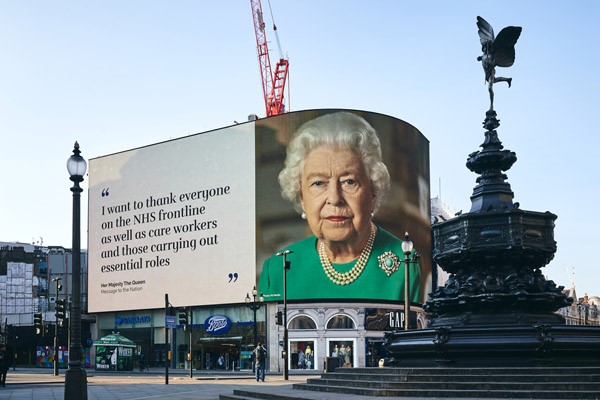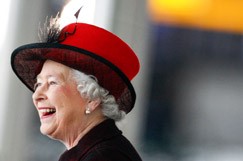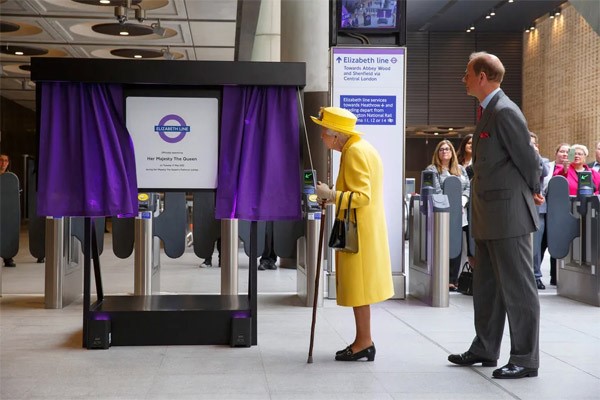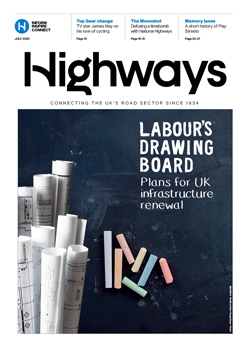It is with enormous sadness that Highways marks the death of Queen Elizabeth II (1926 -2022) and looks back on her historic reign.
During the 70 years of her time on the throne, so much changed in the world, including of course the world of highways and transportation. The car became accessible to and was relied on by the majority of Britain’s population. Alongside this, the road network grew and motorways came into being.
The late queen was, of course, frequently the person tasked with formally opening so much of the new infrastructure that came into being during her reign – and much of it bears her name, from the Queen Elizabeth II Bridge to London’s new Elizabeth line.
It has been said that Queen Elizabeth II was a constant in our society. But she also became something more mercurial in her unique, momentous life.

She achieved a kind of change, indeed alchemy, one can only see from the distance of time. She was indeed a constant, despite her reign taking place in the most constantly changing age history has ever known. But something else was happening beneath the surface.
Elizabeth Windsor came of age in the 'terrible and glorious' years of the second world war. When she took the throne in 1952 at the age of 25 there must have still been an element of the mythic, almost supernatural to the crown: a sense of divine separation whether by social right or religion.
During the worst of the COVID crisis, the late queen was a great comfort to many in the nation. Her first speech on the issue came like a balm on a fresh wound and the line that moved people most was taken from the old Second World War refrain: ‘we will meet again.’
Odd that this sense of the relatable is what politicians strive so hard to achieve, knowing it is almost by definition beyond them, and yet the head of state, someone from the stratosphere of the social system, achieved it effortlessly.
It is partly perhaps an odd trick of the British class system, but this ‘trick’ became the most essential part of Queen Elizabeth II's reign - her ability to change and be changed with the rhythms of the nation, but always as the modern phrase goes ‘to be there for us’. To be with us at an ever closer remove. By the end, she felt like everyone’s relative and there is a sense that we have all lost a grandparent.
Two of the best anecdotes about her life demonstrate this.
The teenage Princess Elizabeth danced on VE Day after slipping into the crowds unnoticed outside Buckingham Palace. The future Queen, then just 19, and her sister Princess Margaret, 14, stood outside Buckingham Palace with the crowd and shouted 'we want the King' with everybody else until the King and Queen came out onto the balcony.

Years later, the Queen described how she was terrified of being recognised on the streets, 'so I pulled my uniform cap well down over my eyes'.
Her uniform was that of the Auxiliary Territorial Service. She had been registered as No. 230873 Second Subaltern Elizabeth Alexandra Mary Windsor and took a driving and vehicle maintenance course at Aldershot, qualifying as a driver.
Another beautiful anecdote has the queen walking with her protection officer in the countryside and meeting American tourists who did not recognise her. On being asked by them if she had ever met the queen, Queen Elizabeth pointed to her protection officer and said: 'Well I haven’t, but Dickie here meets her regularly'.
History might be full of such stories of monarchs in disguise among the people but few will be so poignant or so funny for being so in character, so natural.
Taking part in the 2012 Olympic opening ceremony with Daniel Craig as James Bond and the Jubilee celebrations with a CGI Paddington Bear, more and more the Queen became in on the nation's jokes and felt less and less removed from us.
When she was 21 she pledged: 'I declare before you all that my whole life whether it be long or short shall be devoted to your service and the service of our great imperial family to which we all belong.'
Her voice in that clip comes from a different age. She has the classic received pronunciation of her time - her English of course. This very beautiful young woman seemed to be held in the palm of history, but she would soon take it by the hand, and she delivered on her promise to spectacular effect.
In the years since she took the crown, she helped modernise the royal family for a television age, and of course, raise her own family of four children. From Churchill onwards, she watched over the changing of prime ministers as well as the changing of the guards, the ending of the empire, the white heat of technology, the pangs of changing economics, and the rise of a new, more evolved, more pluralistic nation. The UK became a commonwealth in one country - smaller but still a world player, and one starting to make some reckoning with its imperial past.

The Queen was the rock that wore down the waves. Through the smallest of shifts over time, noticed in her accent most of all, she came through headwinds and made duty something that enlarged her and something she enlarged in turn.
In anyone else, one might say that the job is not everything, that no one looks back and wishes they could have done more work - the Queen is probably the greatest of exceptions to this.
It is almost certainly true that no one in all of history has met so many people. She has walked among crowds and gatherings and parties and dinners and openings and tours and surely greeted more people and spoke to more people than anyone in all recorded time.
And through this patient, prosaic work she brought about momentous change to one of the oldest, most powerful, most influential institutions in all of human history. The United Kingdom’s Royal Family no longer wields a sword, but a diary.
She became a queen to the people of the world - the Queen, the definite article. It is perhaps not always appreciated by the British how worldwide this feeling is. Her image was the most recognisable of icons, her face was the most replicated in the world, her fame almost unparalleled. She was as close to a global monarch as the world will ever know.
She turned the gaze of an antique institution away from the imagined heavens and back to the imagined community it was supposed to serve and when called upon at times of need, she made that community feel more real.
She lived a long life, reaching 96. As is often the way, she passed shortly after the death of her husband of many decades. The heart of a queen is no different from anyone else’s.
The greatest English poet of her reign was the dour Philip Larkin the very image of the post-imperial doldrums yet capable of moments of exquisite tenderness.
‘What will survive of us is love.’
The Royal Family represents time and tradition itself, and the Queen transfigured this ancient stone into something more alive while protecting its most essential elements and making them true. What survives of her is love and duty.





